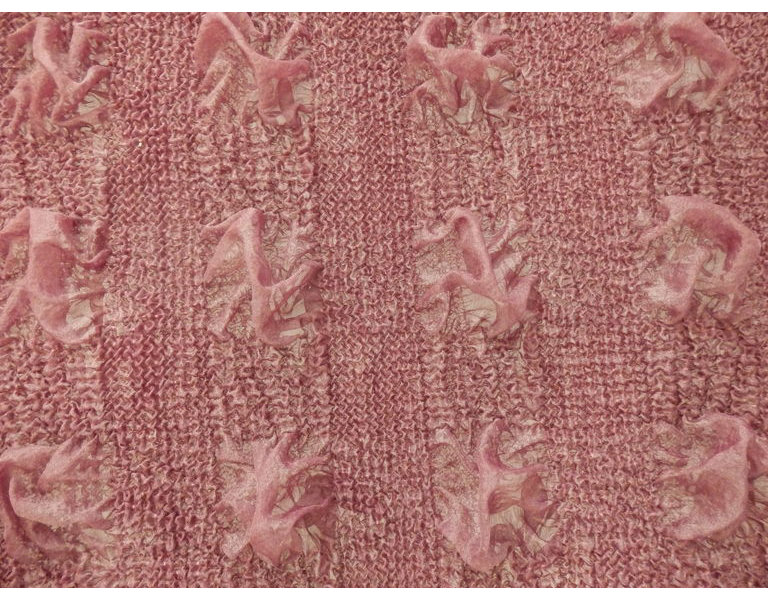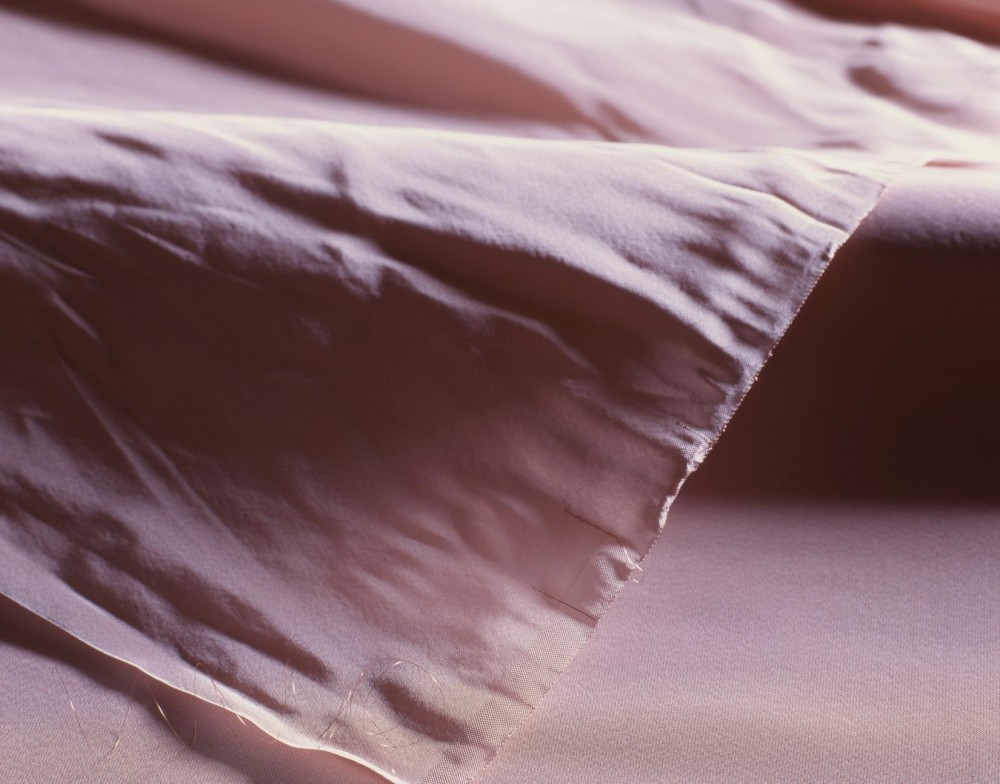Evaluation
I revisited Part 2 heavily in the end – going back to the dissolvable film and sought to refine my use and application of it.
I did feel overwhelmed by the amount of paths I could have taken with Part 5. I enjoyed searching for a subject and making up a theme/concept from which to work from. I recognise that this, like most, is paramount to feeling engaged with my work and making outcomes that feel alive.
What went well and less well?
Using yarn wraps has been an eye opener for me and helpful in setting the tone and mood – through colour and textures. I appreciate the importance of appreciating how I can extract colour from just about anything. I think it is the colour and yarn use that holds the whole collection together. Through selecting yarns and materials that matched my yarn wraps it kept me on some sort of track.
My yarn explorations didn’t go so well. I could have investigated them further.
But I also noted the importance that even the assignment brief itself warns: to focus on a few things/techniques well.
I did feel overwhelm at times. There seemed to be so many ways and possibilities to go. The feedback from my tutor was helpful and yet I felt like I couldn’t do all the ideas justice in the time I had.
This did mean I stylised early – and I hit a momentary brick wall. My work began to get tentative and lacked the boldness that I know I can achieve when I keep the idea moving with energy. I spent a long time on studying colour palettes and making visual responses. Recording the theme is important but possibly this is also my ‘comfort zone’, which made moving towards initial translations into textiles a bit rocky.
There were many trials and failed experiments and I also felt the pressure of time. I had to come up with something that worked and I felt nothing was working the moment I transitioned from paper to yarns and fabric.
I could have made more in response to the artists I researched. I really wanted to investigate ways to imitate the woven pieces with copper by Reiko Sudo. I was aware that I have never woven anything before and decided at this point not to pursue the technique.
With regards to my strengths on the whole course module, I have shown an understanding for colour.

I have developed my own ‘voice’, something that has not only been reaffirmed by tutor feedback, but I myself can see it in my drawings and approach to working. This has been a priority for me as as I am committed to making finding my artistic voice and skill and pursuing a career out of it.
I would like to spend more time addressing how my own voice and visual style connects to the work of others. I would like to learn even more about Nuno and Reiko Sudo and the new technologies they employ. I feel I only delved into this lightly in Assignment 4 and 5. Where does my work best lay? I have come to wonder if my practice is not more design concept based than anything else. Having said that, I know that it is vital for me to make work that has meaning and purpose for me. It cannot be merely a play on the formal elements. Or at least making sure that my source of inspiration has enough depth to me. I also wonder if I should focus on composition, concepts and design based work rather than ‘making’?
I would like to explore my painting and drawing and use them more to explore composition, potentially explore design work further. I didn’t appreciate how much I both enjoy the process and also find it vital in the creative process to help me think through and understand a theme. I wonder if I should focus on composition, concepts, and design based work rather than ‘making’ textile outcomes?
Reviewing work against assessment criteria:
Demonstration of technical and visual skills – materials, techniques, observational skills, visual awareness, design and compositional skill.
I think my textile work still has a long way to go in showing an understanding and refinement of techniques, however my drawing and visual recording has improved as I have widened my understanding of the purposes to it. I don’t have to finish and complete every drawing, or sample as I see it is part of a wider process.
It is hard to judge if I didn’t employ as many techniques as expected – it is an area that I am still new to. However, I also think the ignorance of many formal and traditional techniques allowed for some creative making and solutions in my outcomes.
I am glad I incorporated some screen printing into my work. Coming from a printmaking background I assumed I would use these techniques more over the course, but I didn’t. I think this is overall good, for it allowed me to concentrate on working with textile materials instead.
Although I don’t ‘create designs’ through preliminary sketches, this happens before, when I am making visual responses to the theme, and after when I am in the making and trialling of textile samples. I feel this way of working is relevant since translating ideas to textile can only happen effectively in the direct use of those materials.
I found I had to work through many ‘failed’ textile samples to get to somewhere near where I wanted to work from. I feel that my ability to decide and select which ideas to move forwards with is good and I can discard trials.
I feel that I have demonstrated a strong visual awareness, in the way I present my ideas (through photography, in my sketchbook and in presentation of drawings and samples). I record visually through a range of mediums and techniques.
The work in my final capsule collection I feel does reflect the qualities of the initial investigation into my theme.
Quality of outcome – content, application of knowledge, presentation of work in a coherent manner, discernment, conceptualisation of thoughts, communication of ideas.
The capsule collection does show some cohesion and I feel that I have presented the idea soundly, using simple white card and basic labelling. The way I chose to record my ideas, and present these through a sketchbook and series of larger scale drawings shows confidence
I wanted to find the line between presenting ‘for assessment’ and having authenticity around the way in which I work. Ultimately I needed to remind myself that the course for me is a way of finding my own voice and confidence in my approach.
Demonstration of creativity – imagination, experimentation, invention, development of a personal voice.
The decision to find my own theme was for me a way of stepping further out into developing my voice. I kept an enquiring approach through how I might translate the ideas into textiles – I felt that many ideas didn’t work but I kept on trying and pushing.
I also looked widely for materials, using scraps from another artist’s bin and reusing food bags.
I went off piste when following the project task list. I read through the tasks and got a good sense of what they were requiring from me, but ultimately I chose to use this final assignment to push further and find my own style of working towards creating a capsule collection. By doing so, I felt free to explore in a way that felt right.
In working on textile samples, I think I was creative in my composition and arrangement of materials. By combining fabric and paper in samples shows an experimental approach. I looked to creating pieces which were very mixed media.
Ultimately, this criteria is a hard one to assess for myself – I feel I could have done so much more, but I did what I could in the time I had. I could have experimented with manipulation of fabric and paper even more, I could have investigated different forms of stitching and adding colour to my work through print and dyes. I could have looked to use weave and other processes to mimic some of the NUNO fabrics I found inspiring.
I would happily continue investigating the theme I created “Minerals & Fragments”.
Context – reflection, research, critical thinking.
I think by using my notebook more, it encouraged me to write much more reflectively as I went along. I wrote on bits of paper, or emailed my tutor with a question and I found that. would then write and explain the context in which I was asking.
It has taken me the whole course to find a way of using both an online learning log and paper one most effectively. The online blog allows me to consolidate some of my written thoughts. My notebook shows more critical thinking ‘on the go’.
I found it very helpful to look at more commercial based art. It helped for me to consider creating a capsule collection that could eventually translate into design ideas for functional use.
It inspired me to use screen print and metallics, and as I worked towards sample 6, to consider composition and collage.
I read a little and kept thinking about the question “what is a surface”.


































































 I made many visual responses. I found painting, drawing and photographing the objects helped me to understand what it was that interested me the most. I like the space around the objects, looking at how they lay next to each other. I spent much time arranging and rearranging them to see what worked.
I made many visual responses. I found painting, drawing and photographing the objects helped me to understand what it was that interested me the most. I like the space around the objects, looking at how they lay next to each other. I spent much time arranging and rearranging them to see what worked.













